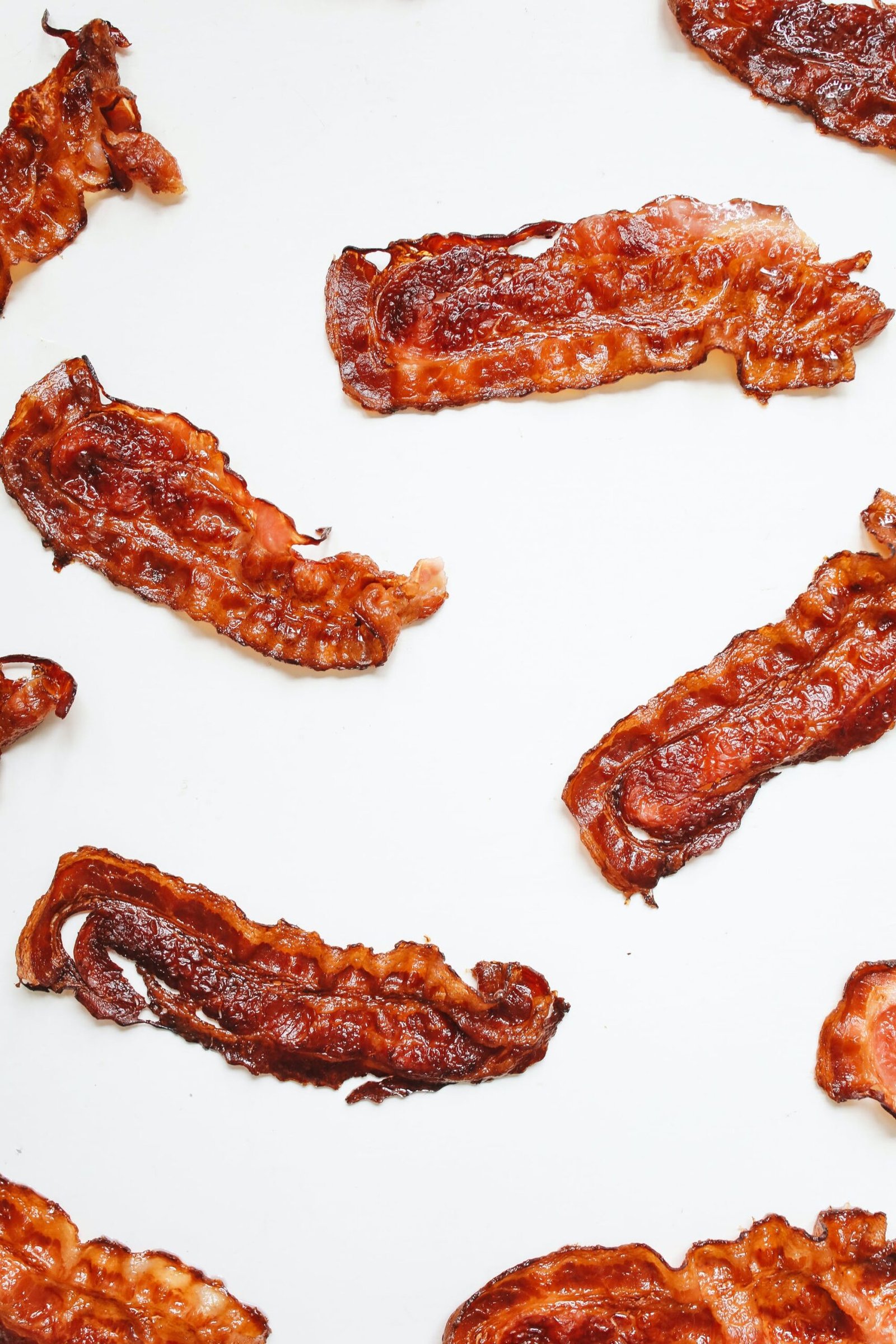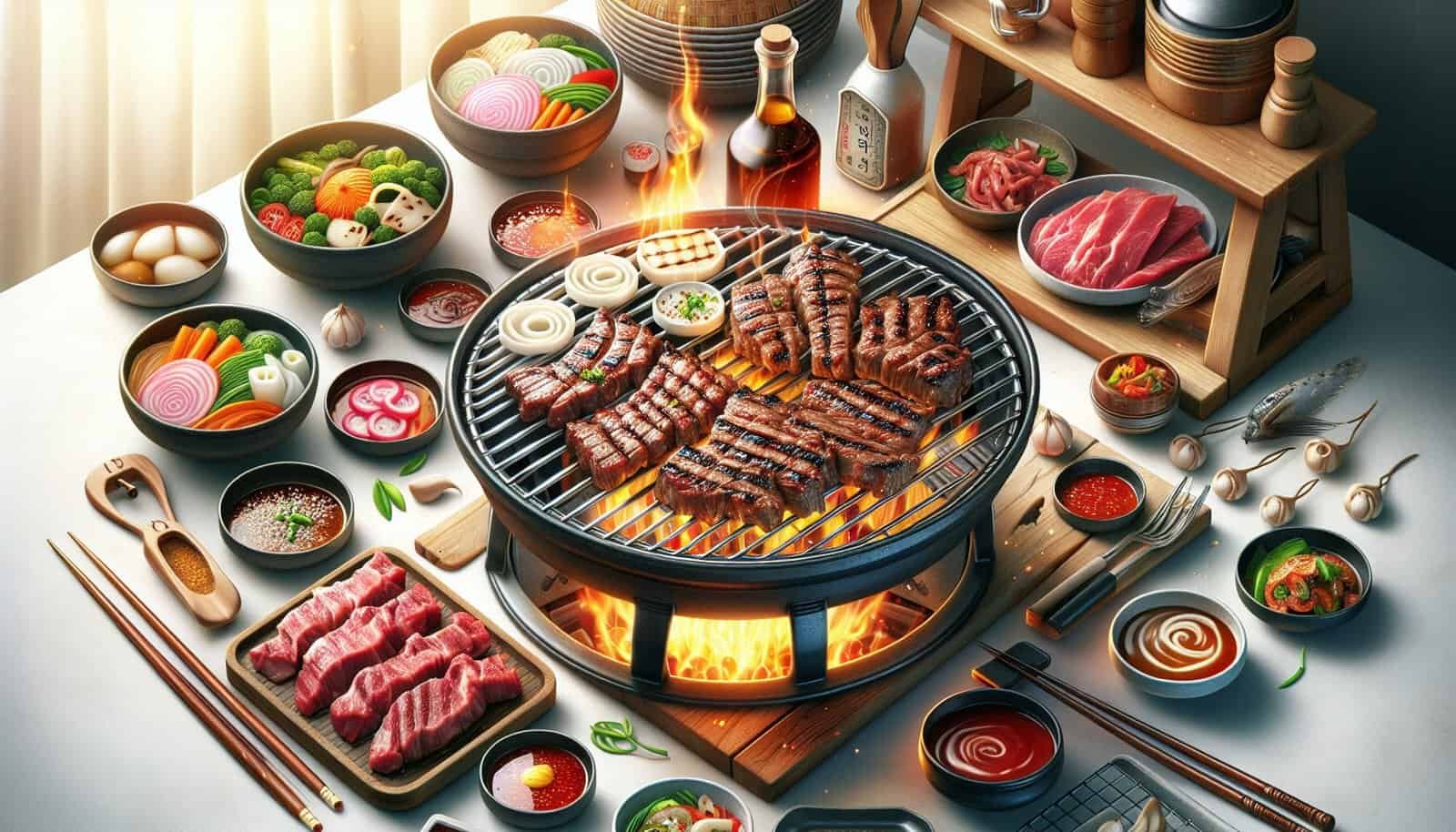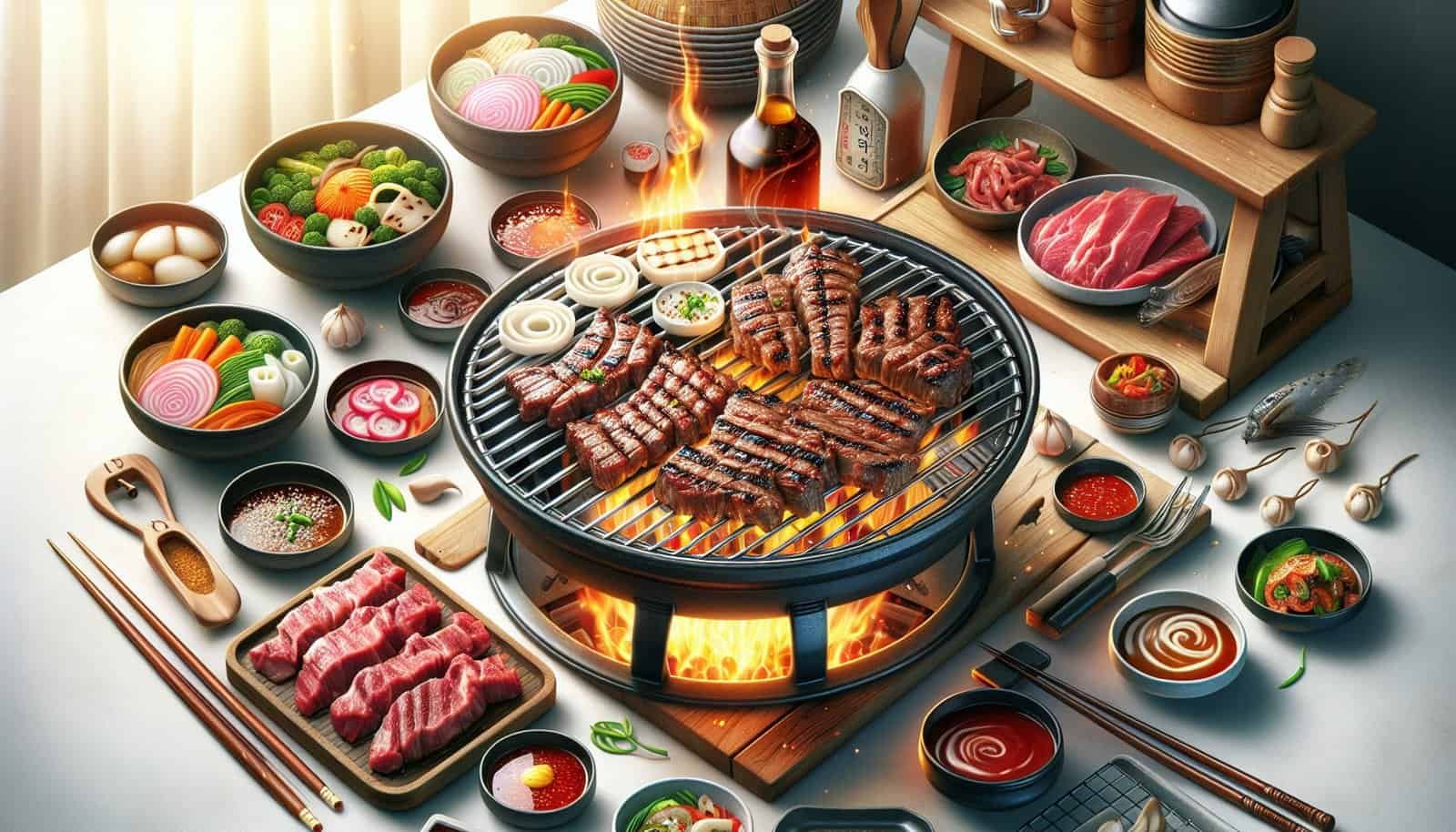Imagine being able to enjoy the delicious flavors of Korean barbecue right in the comfort of your own home. With a few simple steps, you can learn how to properly prepare and serve Korean barbecue like a pro. From marinating the meat to grilling it to perfection, this article will guide you through the process, ensuring that you impress your family and friends with an authentic Korean barbecue experience. Get ready to tantalize your taste buds and embark on a culinary adventure that will leave you craving for more.

Choosing the Meat
When it comes to Korean barbecue, choosing the right meat is crucial to the success of your dish. Whether you prefer marinated or plain meat, there are several factors to consider.
Marinated or Plain?
One of the first decisions you’ll need to make is whether you want to use marinated or plain meat for your Korean barbecue. Marinated meat is pre-seasoned and often has a bold, savory flavor. This can save you time and effort when it comes to seasoning your meat, as the flavors are already infused. On the other hand, using plain meat allows you to customize the seasoning according to your taste preferences.
Different Cuts of Meat
In Korean barbecue, there are various cuts of meat to choose from. Some popular options include bulgogi (thinly sliced beef), galbi (beef short ribs), dak-galbi (spicy marinated chicken), and samgyeopsal (pork belly). Each cut has its own unique texture and flavor profile, so it’s worth experimenting with different cuts to find your favorites.
Quality Matters
When it comes to Korean barbecue, the quality of meat can make all the difference. Opt for fresh, high-quality meat from a trusted butcher or grocery store. Look for well-marbled beef or pork, as this fat content adds flavor and tenderness to your barbecue. Taking the time to source quality meat will elevate your Korean barbecue experience and ensure a delicious outcome.
Prepping the Grill
The grill is the heart of Korean barbecue, so it’s essential to prepare it properly before cooking your meat. Here are a few key considerations to keep in mind.
Charcoal or Gas?
One of the first choices you’ll need to make is whether to use a charcoal or gas grill. Both options have their pros and cons. A charcoal grill offers that distinct smoky flavor and traditional appeal, but it requires more time and effort to set up and control the heat. On the other hand, a gas grill is convenient and easy to use, offering precise temperature control. Ultimately, the choice comes down to personal preference and what you have available.
Setting Up the Grill
Whichever type of grill you choose, it’s important to set it up correctly. For a charcoal grill, start by arranging the charcoal in a pyramid shape and light it using newspaper or a chimney starter. Allow the coals to burn until they are gray and glowing before spreading them evenly across the bottom of the grill. If using a gas grill, preheat it to the desired temperature according to the manufacturer’s instructions.
Proper Ventilation
Ventilation is key to ensure a consistent heat and prevent flare-ups on the grill. Open the vents on your charcoal grill to allow for proper airflow and temperature control. If using a gas grill, make sure the vents are not blocked and the burners are properly aligned. Adequate ventilation will help you achieve even cooking and avoid any potential mishaps.
Marinades and Sauces
Marinades and sauces play a vital role in enhancing the flavors of your Korean barbecue. Whether you prefer traditional options, store-bought alternatives, or homemade sauces, there are plenty of choices to suit your taste.
Traditional Marinades
Traditional Korean marinades are known for their rich, savory flavors. Some popular options include bulgogi marinade, which typically consists of soy sauce, garlic, ginger, sugar, and sesame oil. Additionally, galbi marinade is a delicious blend of soy sauce, sesame oil, garlic, ginger, and pear. These marinades infuse the meat with incredible taste and tenderness, providing an authentic Korean barbecue experience.
Store-bought Options
If you’re short on time or prefer convenience, store-bought marinades and sauces are readily available. Many grocery stores carry a wide range of Korean barbecue marinades, offering different flavor profiles to suit your preferences. Look for reputable brands that use quality ingredients. While store-bought options may not provide the same depth of flavor as homemade marinades, they can still be a delicious and time-saving alternative.
Homemade Sauces
For those who enjoy experimenting in the kitchen, homemade sauces can take your Korean barbecue to the next level. From gochujang-based sauces to sesame oil and soy sauce combinations, the possibilities are endless. Consider adding a spicy kick with chili flakes or go for a tangy twist with rice vinegar. Homemade sauces allow you to customize the flavors to your liking and add a personal touch to your barbecue spread.
Side Dishes
No Korean barbecue is complete without a variety of delicious side dishes, known as banchan. These accompaniments add complexity and balance to your meal. Here are a few classic side dishes to consider.
Kimchi
Kimchi is a staple in Korean cuisine and is often considered the most famous side dish. Made from fermented cabbage or radishes, kimchi offers a unique combination of savory, sweet, and spicy flavors. Its tangy taste and crunchy texture make it a perfect accompaniment to grilled meat. You can easily find pre-made kimchi at Asian grocery stores, or try making your own for an authentic experience.
Pickled Vegetables
Pickled vegetables, or jangajji, are another common side dish in Korean barbecue. These pickles are made by marinating various vegetables, such as cucumbers, radishes, or carrots, in a mixture of vinegar, sugar, and spices. The tangy and refreshing taste of pickles complements the richness of grilled meat, offering a delightful contrast in flavors.
Rice and Noodles
In Korean barbecue, rice and noodles are often served as side dishes to provide a balanced meal. Steamed rice, known as bap, is a staple accompaniment that helps to soak up the flavors of the grilled meat. Noodles, such as japchae (sweet potato starch noodles) or naengmyeon (buckwheat noodles), offer a satisfying and refreshing addition to your barbecue spread. These side dishes help round out the meal and provide a variety of textures and flavors for a satisfying dining experience.

Table Setting
Creating an inviting and functional table setting is essential when serving Korean barbecue at home. Pay attention to the following elements to ensure a well-prepared table.
Grill and Tongs
Place the grill in the center of your table, making sure it is easily accessible to everyone. Position the tongs beside the grill for easy flipping of the meat while cooking. This allows everyone to participate in the cooking process and adds an interactive element to the dining experience.
Small Plates and Utensils
Provide each person with small individual plates and utensils. These small plates can be used for holding the cooked meat, as well as the various side dishes. Utensils such as chopsticks, spoons, and forks should be readily available for everyone to use according to their preference. Having individual plates and utensils ensures a clean and organized dining experience.
Condiments and Garnishes
Set out various condiments and garnishes on the table to accompany the barbecue. Popular options include ssamjang (a spicy and savory dipping sauce), sesame oil, salt, and pepper. Additionally, fresh lettuce leaves and perilla leaves can be laid out for wrapping the grilled meat, adding freshness and crunch to each bite. Having a variety of condiments and garnishes allows each person to customize their barbecue according to their taste preferences.
Cooking Techniques
To achieve the perfect Korean barbecue, it’s essential to master various cooking techniques. The following techniques will help you achieve the desired flavors and textures for your grilled meat.
Direct Heat Cooking
Direct heat cooking involves placing the meat directly over the heat source. This method is suitable for thin cuts of meat, such as bulgogi or dak-galbi. It allows for quick cooking and adds a delicious char to the meat. To cook using direct heat, place the meat on the grill and cook it for a short amount of time on each side, flipping it regularly to ensure even cooking.
Indirect Heat Cooking
Indirect heat cooking is ideal for thicker cuts of meat, such as galbi or samgyeopsal. This method involves placing the meat to the side of the heat source, allowing it to cook slowly and evenly. To cook using indirect heat, create a two-zone fire on your grill by piling the charcoal on one side or adjusting the gas burners. Place the meat on the cooler side and cover the grill to ensure a consistent temperature. This technique helps the meat retain its juiciness and tenderness while developing a delicious flavor.
Timing and Temperature
Timing and temperature control are crucial for achieving perfectly cooked meat. Keep a close eye on the cooking time and adjust the heat if necessary to prevent undercooking or overcooking. Use a meat thermometer to ensure the meat reaches the desired internal temperature. For example, medium-rare beef should reach around 135°F (57°C), while poultry should reach 165°F (74°C). Taking the time to monitor the temperature will help you cook your meat to perfection and avoid any food safety risks.

Serving the Barbecue
After all the hard work of grilling and preparing, it’s time to serve your delicious Korean barbecue. Consider the following tips to ensure a memorable dining experience.
Hot off the Grill
Serve the grilled meat as soon as it’s off the grill to ensure it retains its juiciness and optimal flavor. Korean barbecue is best enjoyed when the meat is still sizzling and hot. Arrange the cooked meat on a serving platter, and bring it to the table immediately for everyone to enjoy. The mouthwatering aromas will entice everyone, and the hot meat will be incredibly satisfying.
Family-style Sharing
In Korean culture, sharing food is a common and cherished tradition. Embrace the family-style dining experience by arranging the side dishes and condiments in the center of the table for everyone to share. Encourage your guests to create their own wraps using lettuce leaves, adding their desired meat and condiments. This interactive and communal dining style creates a warm and convivial atmosphere, perfect for bonding over a delicious meal.
Proper Etiquette
When serving Korean barbecue, it’s important to observe proper etiquette. Remind your guests to use their utensils or chopsticks to handle the meat and avoid using their hands directly. Encourage everyone to enjoy the meal at a leisurely pace, appreciating each bite and savoring the flavors. Additionally, it’s customary to thank the person cooking the meat by saying “Gamsahamnida” or “Thank you” as a gesture of appreciation.
Tips and Tricks
To further enhance your Korean barbecue experience, here are a few tips and tricks to keep in mind.
Thawing Frozen Meat
If you’re using frozen meat, make sure to thaw it properly before cooking. Thawing in the refrigerator overnight is the safest method, as it allows for a slow and even thaw. Avoid thawing meat at room temperature, as this can promote bacterial growth. Thawed meat will cook more evenly and result in a better texture and flavor.
Tenderizing Tough Cuts
If you’re using tougher cuts of meat, such as beef short ribs, consider tenderizing them before grilling. Use a meat mallet or a tenderizing tool to break down the muscle fibers and make the meat more tender. This step is especially important for thicker cuts that require longer cooking times.
Achieving Charred Flavors
To achieve those delicious charred flavors synonymous with Korean barbecue, consider brushing the meat with a thin layer of oil before grilling. This helps to prevent sticking and promotes caramelization on the surface of the meat. Additionally, try using marinades or sauces that contain sugar, as this will contribute to the development of a desirable char on the meat.

Vegetarian Options
Korean barbecue can be enjoyed by vegetarians and vegans too. Here are some delicious vegetarian options to consider.
Grilled Tofu
Tofu is a versatile ingredient that can be marinated and grilled to perfection. Look for firm or extra firm tofu, as it holds its shape better on the grill. Marinate the tofu in a flavorful sauce, such as a soy-based marinade, before grilling until it develops a delicious crispy exterior. The smoky flavors of the grill paired with the marinade will give the tofu a delightful taste and texture.
Mushroom Barbecue
Mushrooms are another wonderful option for vegetarian barbecue. Portobello mushrooms, in particular, have a meaty texture that makes them a great substitute. Brush the mushrooms with a marinade or sauce of your choice and grill them until tender. The mushrooms will absorb the flavors and develop a rich umami taste, making them a satisfying and flavorful vegetarian alternative.
Marinated Vegetables
Don’t forget about marinated vegetables as a delicious vegetarian option. Zucchini, bell peppers, eggplant, and onions all work well when marinated and grilled. Chop the vegetables into bite-sized pieces and toss them in a marinade of your choice. Allow them to marinate for at least 30 minutes before threading them onto skewers and grilling until tender. The charred edges and flavorful marinade will make these vegetables an exciting addition to your Korean barbecue feast.
Cleaning Up
After indulging in a delicious Korean barbecue meal, it’s time to clean up. Here are a few steps to ensure your grilling area and utensils are properly cleaned and maintained.
Scrubbing the Grill
Allow the grill to cool down completely before attempting to clean it. Using a grill brush, scrub the grates to remove any food residue. For more thorough cleaning, you can soak the grates in warm soapy water and scrub them with a sponge. Rinse the grates thoroughly with clean water and dry them completely before storing.
Discarding Ashes
If you’re using a charcoal grill, make sure to dispose of the cooled ashes properly. Remove the ashes from the grill using a metal scoop or ash tool and transfer them to a metal container. Avoid discarding ashes in plastic bags or near flammable materials. Once the ashes have cooled completely, you can safely dispose of them.
Washing Utensils
Clean any utensils used for grilling, such as tongs, spatulas, or skewers, thoroughly with hot, soapy water. Make sure to remove any food particles to prevent the growth of bacteria. Dry the utensils before storing them in a clean and dry area. Additionally, wash any plates, bowls, and utensils used for eating, ensuring they are clean and ready for your next Korean barbecue adventure.
Properly preparing and serving Korean barbecue at home is a delightful experience that allows you to showcase the rich flavors and cultural traditions of this beloved cuisine. With the right meat, a well-prepared grill, flavorful marinades and side dishes, and some cooking techniques up your sleeve, you can create a memorable feast for your family and friends. Remember to embrace the communal aspect of Korean barbecue, allowing everyone to participate in the cooking process and savoring the delicious flavors together. So fire up the grill, gather your loved ones, and enjoy the wonderful world of Korean barbecue right in the comfort of your own home. Gamsahamnida!

